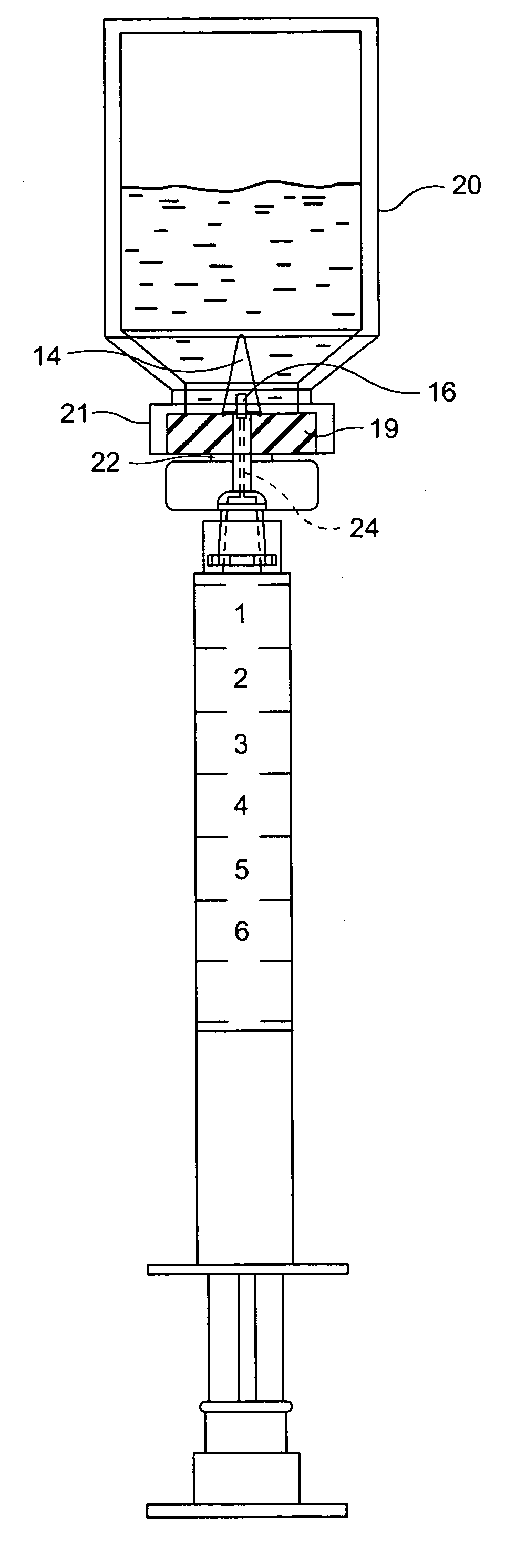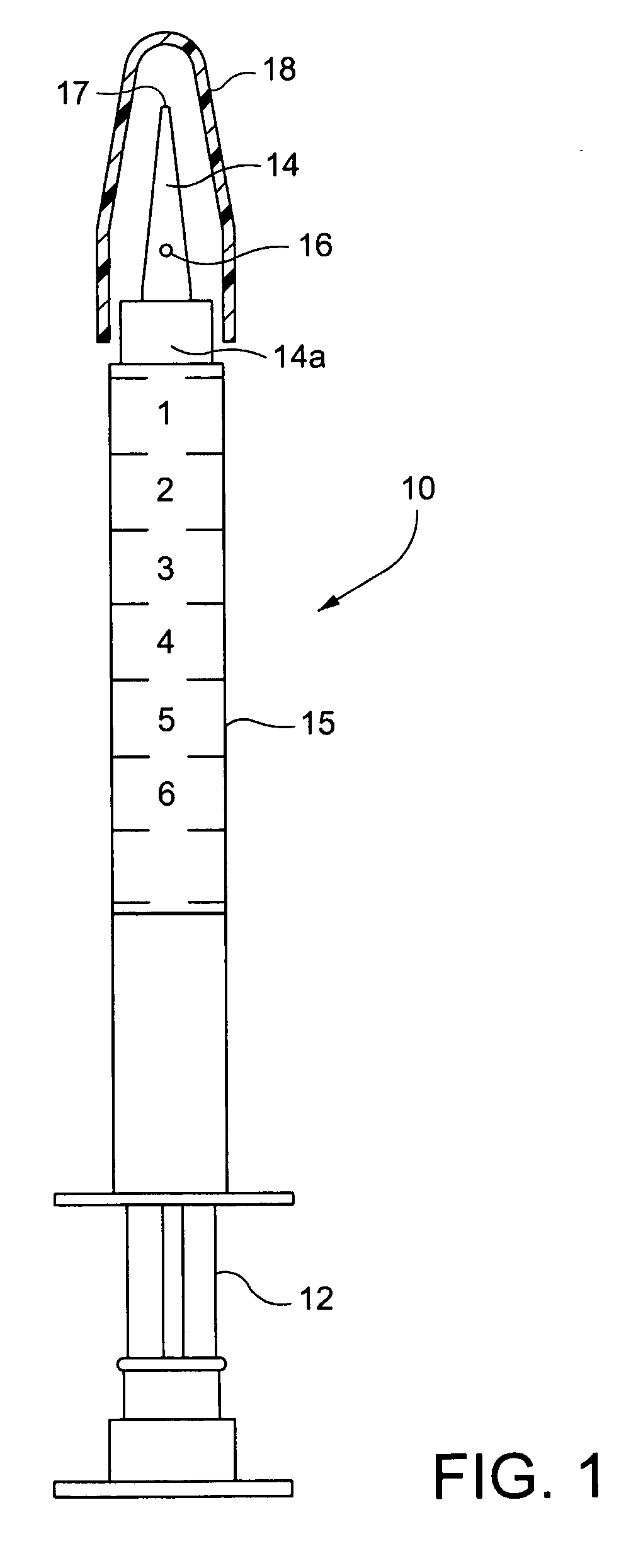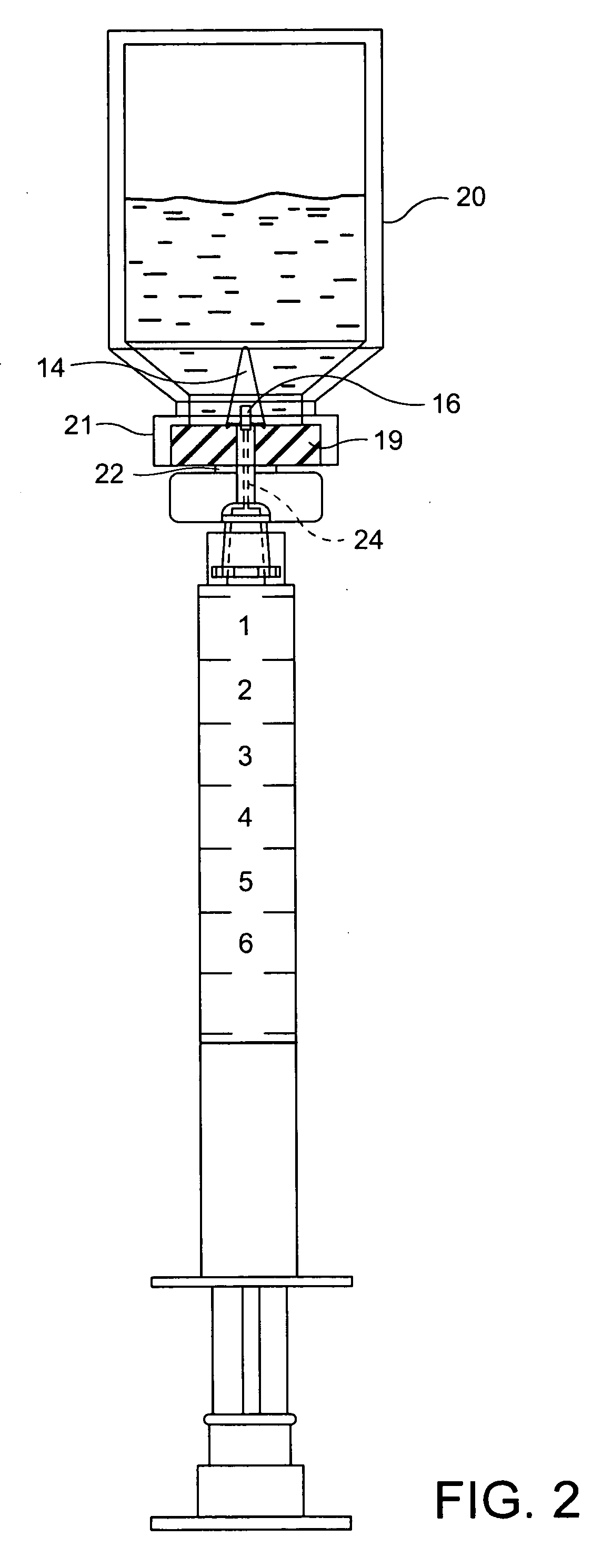Safety fluid transfer cannula
- Summary
- Abstract
- Description
- Claims
- Application Information
AI Technical Summary
Benefits of technology
Problems solved by technology
Method used
Image
Examples
Embodiment Construction
[0029] Referring to the drawings, particularly FIG. 1, a syringe generally designated 10 is illustrated including a plunger 12 and an integral cannula manufactured as a syringe barrel extension shown as 14 and 14A with a lumen opening or port 16 through a side surface of the integral cannula in communication with a passage, preferably axial through the cannula, in turn an extension of and therefore in communication with the interior of the syringe barrel 15. The tip 17 of the cannula 14 is semi-sharp, enabling the cannula 14 for penetration through the septum, i.e., an elastomeric membrane stopper of a vial, or a septum (possibly pre-slit) of an IV line access port. The relative bluntness of the tip 17 generally precludes penetration of the skin or of a protective glove as often worn by an individual using the syringe 10. The solid tip ensures that the insertion of the cannula through a membrane does not core the membrane or produce unwanted particles during insertion. The side open...
PUM
 Login to View More
Login to View More Abstract
Description
Claims
Application Information
 Login to View More
Login to View More - R&D
- Intellectual Property
- Life Sciences
- Materials
- Tech Scout
- Unparalleled Data Quality
- Higher Quality Content
- 60% Fewer Hallucinations
Browse by: Latest US Patents, China's latest patents, Technical Efficacy Thesaurus, Application Domain, Technology Topic, Popular Technical Reports.
© 2025 PatSnap. All rights reserved.Legal|Privacy policy|Modern Slavery Act Transparency Statement|Sitemap|About US| Contact US: help@patsnap.com



